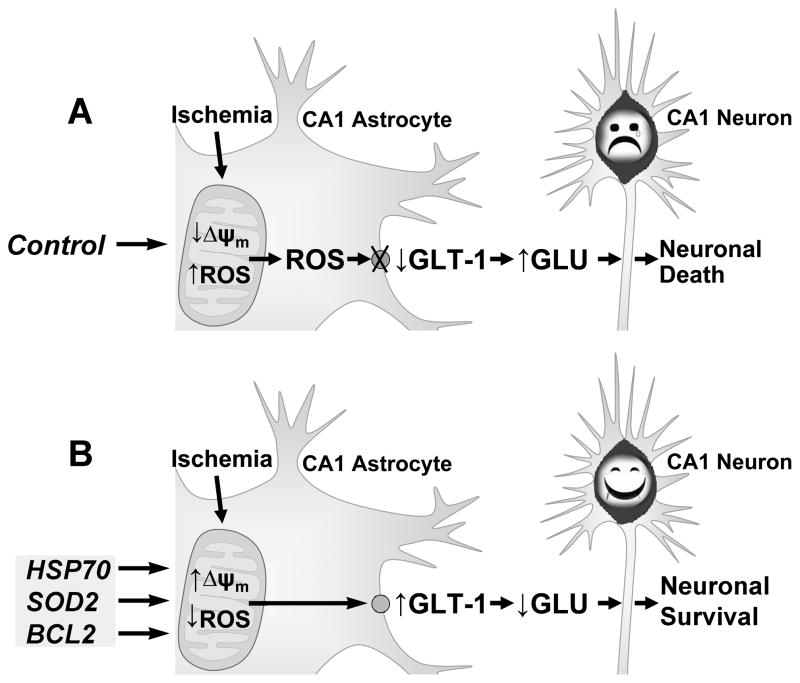Fig. 2.
Proposed mechanism of astrocyte contribution to delayed neuronal death. A) Transient forebrain ischemia selectively decreases mitochondrial membrane potential (Δψm) and increases ROS in CA1 astrocytes. The greater production of ROS leads to astrocyte impairment including oxidative damage of GLT-1 on the astrocyte membrane. The loss of GLT-1 contributes to the increase of extracellular glutamate and excitotoxicity of the pyramidal neurons. B) By protection of astrocytic mitochondria using HSP72 or SOD2 or anti-apoptotic members of the BCL2 family, astrocytic GLT-1 is preserved and extracellular glutamate is decreased, which results in survival of CA1 neurons. Modified from Fig. 6 in Ouyang et al. (2007).

